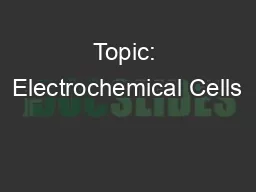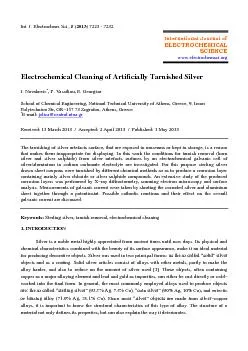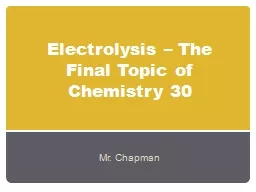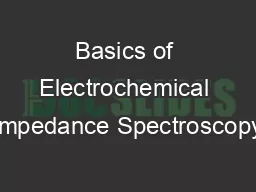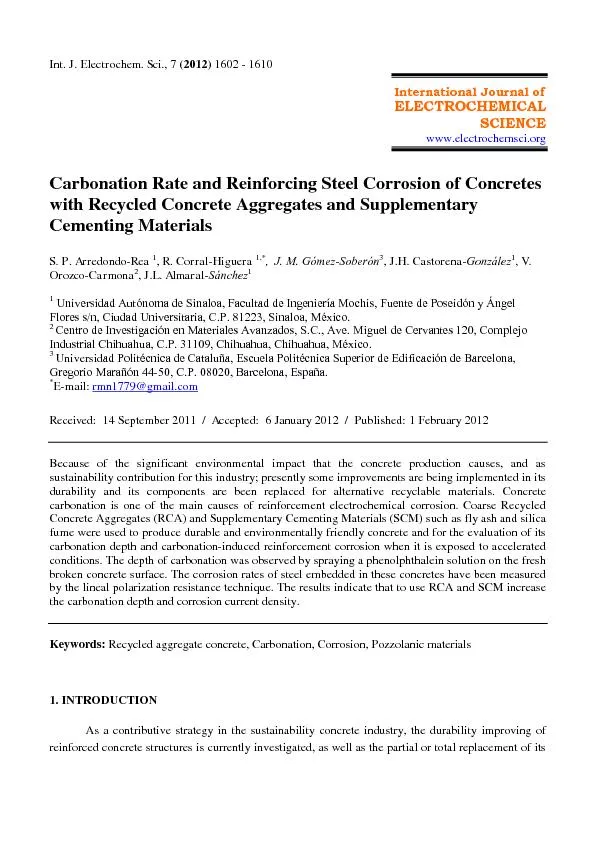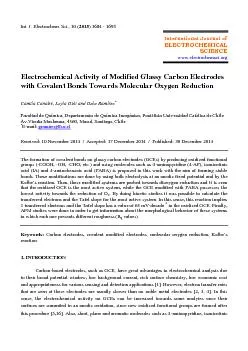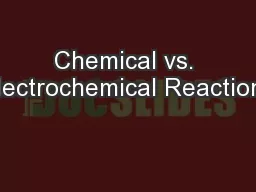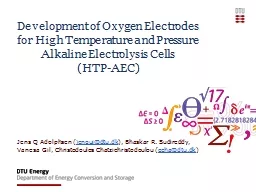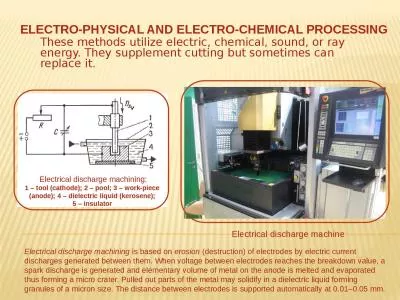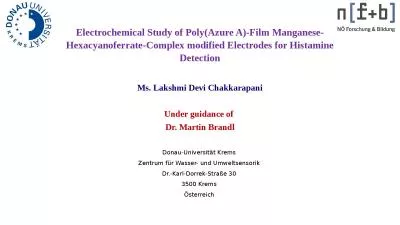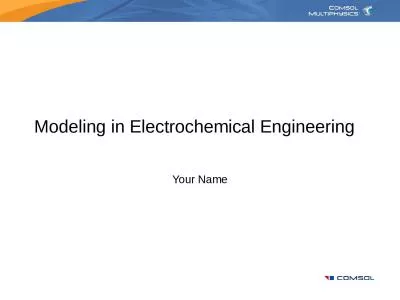PPT-Topic: Electrochemical Cells
Author : marina-yarberry | Published Date : 2018-09-21
Do Now 5 color pencils Electrochemistry the study of the relationship between chemical potential energy and electrical energy All this occurs Via flow of electrons
Presentation Embed Code
Download Presentation
Download Presentation The PPT/PDF document "Topic: Electrochemical Cells" is the property of its rightful owner. Permission is granted to download and print the materials on this website for personal, non-commercial use only, and to display it on your personal computer provided you do not modify the materials and that you retain all copyright notices contained in the materials. By downloading content from our website, you accept the terms of this agreement.
Topic: Electrochemical Cells: Transcript
Do Now 5 color pencils Electrochemistry the study of the relationship between chemical potential energy and electrical energy All this occurs Via flow of electrons Chemical rxns can produce electricity. Chehimi Iluminada Gallardo Jean Pinson and Neus Vila Departament de Qu mica Universitat Auto noma de Barcelona Bellaterra Espan a ITODYS Universite Paris 7Denis Diderot 75005 Paris France and Laboratoire dElectrochimie Mole culaire Universite Paris 8 ( 2013 ) 7223 - 7232 International Journal of ELECTROCHEMICAL SCIENCE www.electrochemsci.org Electrochemical Cleaning of Artificially Tarnished Silver J. Novakovic * , P. Vassilio u, E. Georgiza Sc Mr. Chapman. Electrolysis. Think of . electrolysis. . and . electrolytic cells. as the . opposite . of . electrochemical cells. .. In . electrochemical cells. , a spontaneous REDOX reaction . is used to create . 10/6/2015. Definition of Resistance and Impedance. Resistance. is . the ability of a circuit element to resist the flow of electrical current. . Ohm's law defines resistance in terms of the ratio between voltage, E, and current, I.. 7 ( 2012 ) 1602 - 1610 International Journal of ELECTROCHEMICAL SCIENCE www.electrochemsci.org Carbonation Rate and Reinforcing Steel Corrosion of Concretes with Recycled Concrete Agg regates and Su 10 ( 201 5 ) 1684 - 1695 International Journal of ELECTROCHEMICAL SCIENCE www.electrochemsci.org Electrochemical Activity of Modified Glassy Carbon Electrodes with Covalent Bonds Towa rds Molecular Chemical reactions are those in which elements are added or removed from a chemical . species.. Electrochemical reactions are chemical reactions in which not only may elements may be added or removed from a chemical species but at least one of the species undergoes a change in the number of valance . Here are some examples that you may use: . Should school uniforms be enforced everywhere? . Should . men get paternity leave from work. ? . Are . we too dependent on computers. ?. . Should animals be used for research. Main Title Here. Topic 1. Topic 1 title goes here. Your text here. Your text here. Your text here. Your text here. Your text here. Your text here. Your text . here. Your text here. Your text here. Your text here. E. lectrodes for . High Temperature and Pressure Alkaline Electrolysis Cells . (. HTP-AEC). Jens Q Adolphsen (. jenqui@dtu.dk. ), Bhaskar R. Sudireddy,. Vanesa Gil. , Christodoulos Chatzichristodoulou . Electrochemistry. Objectives for Today. Condense material into focused learning objectives. Discuss question types for each topic. I have divided this unit into 4 main ideas:. Electrochemical Reactions. . Electrical. . discharge. . machin. e. . Electrical. . discharge. . machining. :. 1 – . tool. (. cathode. ); 2 – . pool. ; 3 – . work-piece. (. anode. ); 4 – . dielectric. . l. iqu. . Manganese-Hexacyanoferrate-. Complex modified Electrodes for Histamine Detection. Ms. Lakshmi Devi Chakkarapani. Under guidance of . Dr. . Martin . Brandl. Donau-Universität . Krems. . Zentrum. . Your Name. Introduction: Electrochemical Systems. Electrochemical systems are devices or processes in which an ionic conductor mediates the inter-conversion of chemical and electrical energy. The reactions by which this inter-conversion of energy occurs involve the transfer of charge (electrons) at the interface between an electronic conductor (the electrode) and an ionic conductor (the electrolyte).
Download Document
Here is the link to download the presentation.
"Topic: Electrochemical Cells"The content belongs to its owner. You may download and print it for personal use, without modification, and keep all copyright notices. By downloading, you agree to these terms.
Related Documents

